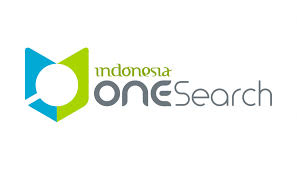ANALISIS PROFITABILITAS, TINGKAT PERTUMBUHAN, DAN SECURABLE ASSET YANG MEMPENGARUHI TINGKAT LEVERAGE PERUSAHAAN PADA PT.TIMAH, TBK
Abstract
The level of leveraging a company has a positive relationship between the value of the company. In this research, the factors that are used to analyze the level of leverage are Profitability, Growth and Securable Asset.The purpose of this research was to analyze the effect of Profitability, Growth, and Securable Asset to leverage the company. Methods of data analysis used are multiple linear regression method. The results showed that of the partial results of hypothesis testing Profitability seen that the value of t-calculate (-1,037) > t-table (-2,353) and value ρ (0,376) > α (0,05) not significant, then there is no influence on the profitability of Leverage. The value of the variable growth rate is seen that the value of t-calculate (-0,474) > t-table (-2,353) and the value of ρ (0.668)> α(0.05) is not significant, then there is no influence on the growth rate of Leverage. Securable Asset variable values can be seen that the t-calculate (-4.055) <t-table (-2.353) and the value of ρ (0.027) <α (0.05) significantly, there is the influence on the Securable Asset of Leverage. Then the simultaneous influence of profitability, growth rate and Securable Asset to Leverage the enterprise level has pretty good predictive capability that is 92.2% as seen from the R2 (experimental determination). And there are still other variables that affect the level of leverage is 7.8% of enterprises that are not discussed in this research.
Keywords: Profitability, Growth, Securable Asset, and Leverage
Tingkat leverage perusahaan memiliki hubungan positif antara nilai perusahaan. Dalam penelitian ini, faktor-faktor yang digunakan untuk menganalisis tingkat Leverage adalah Profitabilitas, Tingkat Pertumbuhan dan Securable Asset. Tujuan dari penelitian ini adalah untuk menganalisis pengaruh Profitabilitas, Tingkat Pertumbuhan, dan Securable Asset terhadap Leverage perusahaan. Metode analisis data yang digunakan adalah metode regresi linier berganda. Hasil penelitian menunjukkan bahwa dari hasil parsial pengujian hipotesis, untuk variabel Profitabilitas terlihat bahwa nilai t hitung (-1,037)> t-tabel (-2,353) dan nilai ρ (0,376)> α (0,05) tidak signifikan, maka tidak ada pengaruh Profitabilitas terhadap Leverage. Nilai variabel tingkat pertumbuhan terlihat bahwa nilai t hitung (-0,474)> t-tabel (-2,353) dan nilai ρ (0,668)> α (0,05) tidak signifikan, maka tidak ada pengaruh tingkat pertumbuhan terhadap Leverage. Nilai variabel Securable Asset dapat dilihat bahwa t-hitung (-4.055) <t-tabel (-2.353) dan nilai ρ (0,027) <α (0,05) signifikan, ada pengaruh Securable Asset terhadap Leverage. Kemudian secara simultan ,Profitabilitas, Tingkat Pertumbuhan dan Securable Asset terdapat pengaruh terhadap tingkat Leverage perusahaan serta memiliki kemampuan prediktif yang cukup baik yaitu 92,2% seperti yang terlihat dari R2 (penentuan eksperimental). Dan masih ada variabel lain yang mempengaruhi tingkat leverage yaitu 7,8% perusahaan yang tidak dibahas dalam penelitian ini.
Kata Kunci: Profitabilitas, Tingkat Pertumbuhan, Securable Asset dan Leverage
.
Full Text:
PDFReferences
Atmaja L, Setia. 2008. Teori dan Praktik Manajemen Keuangan. Edisi I. Yogyakarta : Andi Offset.
D, Gujarati. 2003. Basic Econometric. New York : Mc-Grawhill.
Ghozali, Imam. 2006. Aplikasi Analisis Multivariate dengan Program SPSS. Edisi IV. Semarang : Penerbit Universitas Diponegoro.
Husnan, Suad. 2001. Teori Management Keuangan dan Penerapan. Edisi IV. Yogyakarta : BPFE.
Keown, Martin, Petty, dan Scott. 2001. Manajemen Keuangan Prinsip-prinsip dan Aplikasi. Jakarta : Prentice Hall Indeks.
Myers C Steward. 2000. Principles of corporate finance, Sixth edition. New York : Mc Graw-Hill Companies Inc.
Priyatno, Dwi. 2008. SPSS untuk Analisis dan Uji Statistik. Edisi I. Jakarta : MediaKom.
Riyanto, Bambang. 2001. Dasar-dasar Pembelanjaan Perusahaan. Edisi IV. Yogyakarta : Penerbit Gajah Mada.
S.D, Young and O’Byrne, S.F. 2001. Value-Based Management. A Practical Guide to Implementation. USA : MacGraw-Hill.
Sartono, Agus. 2008. Manajemen Keuangan : Teori dan Aplikasi. Yogyakarta : BPFE.
Sugiyono. 2006. Memahami Penelitian Kualitatif, Bandung : CV. Alfabeta.
DOI: https://doi.org/10.31294/jp.v15i2.2018
Copyright (c) 2017 Perspektif
dipublikasikan oleh LPPM Universitas Bina Sarana Informatika Jakarta
Jl. Kramat Raya No.98, Kwitang, Kec. Senen, Kota Jakarta Pusat, DKI Jakarta 10450

This work is licensed under a Creative Commons Attribution-ShareAlike 4.0 International License









